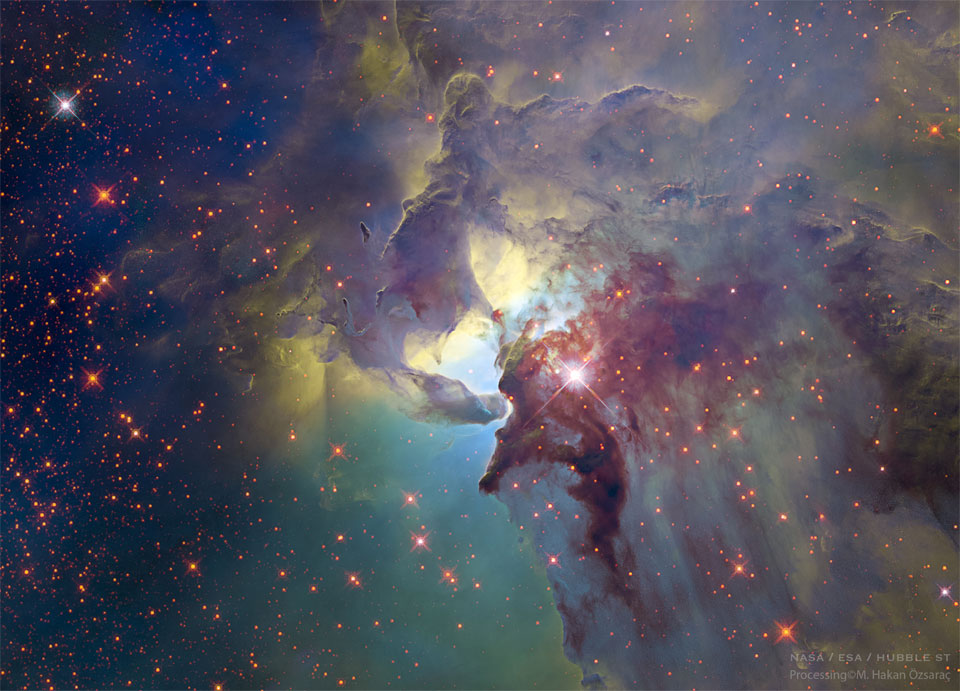johnnydeep wrote: ↑Wed May 25, 2022 2:49 pm
Ann wrote: ↑Wed May 25, 2022 7:50 am
Beaker42 wrote: ↑Wed May 25, 2022 6:18 am
Does anyone have an idea why it appears that the star groups on the left of the image appear to be arrayed in chains of stars? Is this an optical illusion, human visual pattern matching? Or are there really chains of stars (or at least stars arranged in flat planes oriented edge-on towards us) ? I have noticed this effect in other Hubble photos, but it seems quite pronounced in this one.
As you can see,
the small red stars that pepper the field in today's APOD are not seen at all in the original NASA image (at left). But as AVAO pointed out, the red stars are probably infrared objects, and the original NASA image shows the center of the Lagoon Nebula in visible light.
...
Ann
Per the text, are not all the red stars due to
interstellar reddening?
Reddening is not constant, but it is variable depending on the amount of dust in front of the stars.
Stars Rho Oph and HD 147889 in IC 4603 are reddened by different amounts.
Credit: Thomas V. Davis.
The dust cloud in front of a star field demonstrates the nature of reddening. An interesting example of variable reddening can be found in the Rho Ophiuchi and IC 4603 region. Rho Ophiuchi and HD 147899 belong to the same spectral class, B2, and they are intrinsically probably more or less the same color. We would expect an unreddened star of spectral class B2 to have a B-V index of around -0.2. However, both Rho Oph and HD 147899 are reddened by dust, but they are reddened by different amounts. The B-V index of Rho Oph is +0.23, whereas the B-V index of HD 147899 is +0.76. In the case of Rho Oph, much of its blue light has been scattered in a large reflection nebula, but in the case of HD 147899, the star is hidden behind so much dust the the reflection nebula surrounding it is barely blue.
My point is that I don't expect the stars near the center of the Lagoon Nebula to be reddened by the same amount. But they do, indeed, look about equally red. My guess is that these stars have been detected by one and the same infrared filter, and therefore the huge majority of them appear to be the same shade of red. Most of them would not be visible at optical wavelengths.
Ann
 The Lively Center of the Lagoon Nebula
The Lively Center of the Lagoon Nebula



